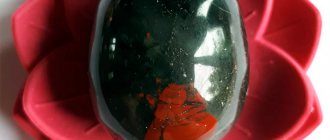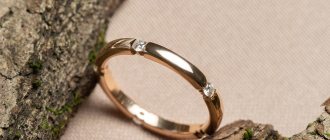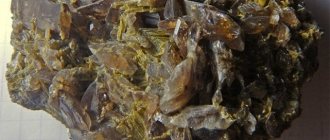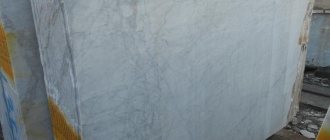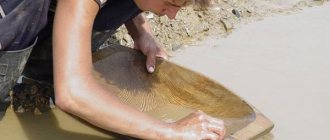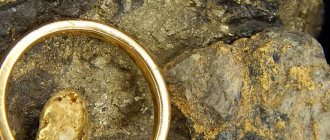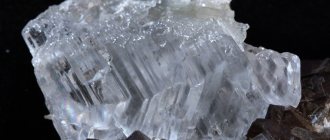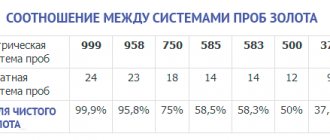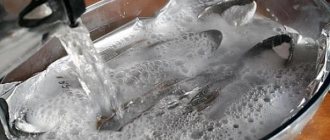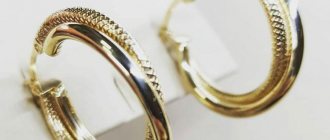Measuring tools
Measuring tools for jewelers or serious craftsmen who have to deal with precise measurements are of primary importance: for calculating the final weight of a casting, for making overlays for existing castings or settings for stones. I always have at least one of these on hand when I start and finish working on a piece. In modeling, measuring tools are used for three purposes: measuring on flat surfaces, measuring volumetric parts along the outer contour and from the inside. To measure flat surfaces, a simple ruler is enough. Better than plastic: unlike metal, it does not scratch the wax. The ruler should have millimeter divisions, since this is the standard unit of measurement in the jewelry industry. In more complex measuring instruments, millimeter divisions are given along with inch divisions. For external measurements (as well as for internal ones), we naturally use a caliper (Fig. 2.15). All caliper coolies operate on the same principle: a ruler (bar) with jaws; one sponge is integral with the bar, and the other is connected to a frame moving along the ruler. You can buy them at a jewelry or drafting supply store or hardware store. They come in metal or plastic, and the quality and sophistication depend on how much you can pay. Some have a locking screw that allows you to maintain the size; others have a round scale, with which it is very easy to read the result. Some, more complex and expensive (up to $175), even have a very accurate scale display. However, a good caliper is still the same millimeter ruler with jaws for internal measurements. As for the material, plastic is also good or even better than metal, for the same reasons, and is twenty percent cheaper. However, remember: the better the caliper is, the more precisely its jaws are fitted; brought together, they should close tightly. Plastic calipers are very fragile - they “break” when heated. Never throw them in your toolbox. One inaccurate measurement can lead to disaster. The only metal measuring tool should be a thickness gauge (Fig. 2.16). It consists of two legs with a scale, ending with jaws at the top and connected by a screw with a spring. When not in use, the spring is weakened, the legs are spread apart, and the jaws are compressed. To measure something, you need to compress the spring, then the jaws will move apart, and the legs on the scale will show the size. For a model maker dealing with gold, which rises in price every day, a thickness gauge is extremely necessary. They use it to determine the thickness of the walls of the product and find out how much “excess” wax needs to be “selected” from the inside; The thinner the wall, the cheaper the finished product will be, of course. Curved jaws are specially designed for taking measurements in hard-to-reach places, such as inside a large convex ring. For such rings, a wall of 1 mm (approximately 1/25 inch) is already considered too thick: the generally accepted standard is 0.75 mm. And without a thickness gauge it is almost impossible to accurately determine its thickness. Unfortunately, this tool is designed for metal work, so it needs some modification for wax work. But even in this case, it should be used very carefully. Curved jaws with a flat contact area, although they are designed specifically for hard-to-reach places, however, precisely because of their shape (if sharpened at a right angle), they often make it difficult to reach them. Also, when the jaws are naturally spring-locked, these corners can scratch the wax. Five minutes of work on a grinding machine or half an hour with an old file can completely improve the matter. The outer corners must be rounded (Fig. 2.16b), and the contact area of the jaws with the product must be reduced to a minimum.
Devices and tools used in jewelry making
The simplest steel plate with a flat surface can be used as an ordinary support pad. It is desirable that there are no sharp corners or edges on it. Along with this, there are also specialized linings, for example, the so-called “anka”, which is a cubic slab with many hemispherical recesses of different diameters, intended for the manufacture of spherical blanks of hollow products. If necessary, soft pads can be used. They are used in cases where it is necessary to reduce the force of impact, for example when chasing. Such devices are made of wood, rubber, cardboard, lead, resin mixture, and special mastic.
Handmade wooden vise
This device is familiar to everyone and consists of two equal semicircular shapes of a wooden sponge board with a total diameter of 30-35 mm. They are connected to each other by a fastening screw, which regulates the degree of proximity and, accordingly, the degree of compression of the jaws. The screw movement usually does not exceed 15 mm. Such a small distance is due to the small size of the jewelry. Decorations or workpieces are secured in a wooden vise for filing, sawing, drilling, scraping, engraving, and setting.
Drill
Typically, jewelers use standard drills of various types that are commercially available. The drill consists of a solid metal rod, collet clamp, handwheel, handle and belt. The rod is used to secure the collet and the flywheel, which has a hole at the top for threading the belt. The drill is secured in the collet clamp. With the help of a rigidly mounted flywheel, which is a metal circle, an element of rotation is transmitted to the rod. The handle fits onto the rod and can move freely. The drill is brought into working condition by periodically pulling up and down the handle up and down. In this case, the belt is sequentially twisted around the rod, giving the latter a rotational movement in both directions. A drill is used to perform drilling or drilling operations on a product or workpiece.
Special clamping fixtures
Often, when engraving an object, it is almost impossible to hold it in your hand. When standard devices such as a wooden hand vice are not suitable, jewelers resort to special devices. These include engraving pads, fastening plates, ball vices, and engraving pads. Engraving pads. These are two small (about 20 by 100 mm) rectangular metal plates, movably connected to each other with clamping screws. All products are fixed in them only using cushioning material (soft wood, leather, etc.).
Fastening boards. The length of the boards is usually arbitrary and depends on the size of the flat products being processed. Their thickness is usually only 20-25 mm. Products are glued to the boards using various pastes, sealing wax, or secured with small nails. Ball vise-shrabkugel. They are made in the form of a cast iron ball, the diameter of which, however, does not exceed 130 mm. The upper part of the ball is cut off, and a groove is made in the segment-shaped cut, in which a board is attached with the help of bolts, on which the product is fixed. In order to ensure free movement of the product and maneuverability during operation, a leather ring is placed under the scrub gel. This allows you to turn the part towards you with the desired side. Sometimes this device is made from a regular, worn-out lathe spindle chuck. The missing part of the device in the form of a hemisphere is simply added to it.
Engraving pillow. This is perhaps the simplest of all known engraving devices. An engraving pad is just a pad filled with sand. The material for it can be anything: old leather, canvas, sackcloth. It is used for placing under the mounting plate. Spatula, brush. The spatula is usually used the same as at home. The requirements for it are extremely simple: it must be smooth, polished, slightly rounded so as not to scratch the metal or “cut off” the enamel when smoothing it. It is used for applying enamel and niello. Enamel, niello and flux are applied with a brush.
Lately, a more modern and versatile type of spatula, the birasp, has been increasingly used. By lightly touching it with the twisted part of the side surface of the product (as if shaking it), jewelers achieve uniform distribution of enamel or niello over the surface. The requirements for brushes are also extremely simple. Typically, hard brushes with pointed ends are used. The size of the brush depends on the size of the product and the amount of enamel applied.
Letkal. It is used by jewelers as a fire retardant when soldering jewelry. The most common is asbestos letkal on a wooden base. If a jeweler deals with products that need to be strengthened in a vertical position for soldering, then spring clamps are made on a letkal. Punch (metal punch). There are manual and automatic punches. They are an ordinary small cylindrical metal rod with one slightly pointed end. Towards the top, the diameter of the center punch increases and is fixed with vodka protrusions. For operational soldering, a turntable is used, which is a metal base on which a rotating table is mounted on a leg.
The stop square is simple or adjustable. This device is used to check the perpendicularity of a stand, protrusion, or element of a product. It also determines the degree of deviation of the surface from straightness and flatness. It is used to indicate the center of subsequent drilling. The pointed end of the punch is placed at the intended drilling location and the blunt surface of the punch is not hit too hard with a hammer. Scriber. This is also a metal rod, in shape and size it is similar to an ordinary pencil, only with a sharper lead (needle) than a pencil. This device is necessary when marking marks on a workpiece. They draw with it both by hand and with the help of various templates, rulers and squares.
The marking plate is used when marking. A fairly thick sheet of unhardened metal with a rectangular or circular cross-section measuring approximately 150 by 100 mm is usually used as a marking plate. A sheet of dense, elastic rubber of appropriate size is usually glued to its lower non-working plane. The top of the slab must be perfectly flat and smooth. Often, jewelers use a straightening plate (flakeisen) as a marking plate.
Hand rollers. This device is used when it is necessary to process metal by pressure, continuously changing its shape along its entire length. This process is called rolling. And the rolling of a separate section of the workpiece is done by rolling. In jewelry practice, rolling mills and rollers are used for rolling. The former are used for rolling large ingots, sheets, and strips in mass production; in individual production, manually driven rollers are used.
Rollers
The rollers are a machine consisting of a support table with or without side guides, two rolls, and a drive that sets the rolls to rotate in different directions and adjusts the gap between them. Rolls come in the form of smooth cylinders and cylinders with cutouts in a wide variety of profiles. Smooth rollers are used for rolling sheets, strips, strips and plates. And profile ones are used to produce rolled products of round, square and other shapes. The cuts in the rolls are called streams. The streams of combined rolls form a clearance-passage for rolling metal and are called a caliber. Several streams form a system of calibers. Rolling differs from rolling only in that the area whose shape needs to be changed is first marked on the workpiece.
Drawing board
Drawing board. It is used when it is necessary to carry out the drawing process manually, that is, to pull the workpiece through the conical hole of a tool called a die or die. It happens that the holes are made directly in the drawing board itself, but sometimes it is equipped with a set of die matrices inserted into it. A drawing board is necessary when it is necessary to obtain wire of a smaller diameter from wire of the same diameter; or from tape - tubular blanks used for the manufacture of various hinge joints and settings for small stones.
Mechanical scissors. Scissors are used for separating one workpiece from another along a given line. They can be either with parallel or inclined knives (guillotine shears), or with circular knives (roller shears).
Quotes and sayings about metals
“Gold is only metal, diamonds are cold stones, a limousine is just a car, don’t pretend, feel the real thing...” - Charlize Theron American actress, producer, fashion model and ballerina of South African origin 1975

